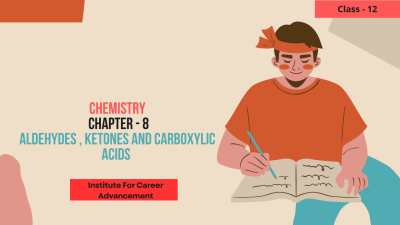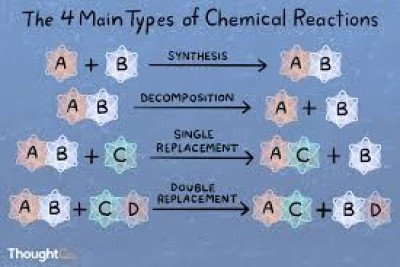Aldehydes , Ketones and Carboxylic Acids - Class 12
In Class 12 Chemistry, you'll encounter a fascinating trio of organic compounds with a special "carbonyl group" (C=O): aldehydes, ketones, and carboxylic acids. Here's a quick introduction: Aldehydes: Imagine a hydrocarbon chain (like gasoline or cooking oil) with a double-bonded carbon-oxygen combo (C=O) on one end, and a hydrogen (H) on the other. That's an aldehyde! They have a distinct pungent smell (think formaldehyde used to preserve some biological specimens). Ketones: Similar to aldehydes, they have the C=O group, but instead of a hydrogen, ketones have two hydrocarbon chains attached to the carbonyl carbon. They generally have a milder smell compared to aldehydes. Carboxylic Acids: These champions have the C=O group, but also an additional OH (hydroxyl) group attached to the carbonyl carbon. This extra OH makes them acidic (think vinegar, which contains acetic acid). দ্বাদশ শ্রেণীর রসায়নে, আপনি একটি বিশেষ "কার্বনিল গ্রুপ" (সি = ও) অ্যালডিহাইড, কিটোন এবং কার্বক্সিলিক অ্যাসিড সহ জৈব যৌগের একটি আকর্ষণীয় ত্রয়ীর মুখোমুখি হবেন। এখানে একটি দ্রুত ভূমিকাঃ অ্যালডিহাইডসঃ একটি হাইড্রোকার্বন শৃঙ্খল (যেমন পেট্রোল বা রান্নার তেল) কল্পনা করুন যার এক প্রান্তে কার্বন-অক্সিজেন কম্বো (সি = ও) এবং অন্য প্রান্তে হাইড্রোজেন (এইচ) রয়েছে। এটি একটি অ্যালডিহাইড! এদের একটি স্বতন্ত্র তীব্র গন্ধ রয়েছে। (think formaldehyde used to preserve some biological specimens). কেটোনঃ অ্যালডিহাইডের মতো, তাদের সি = ও গ্রুপ রয়েছে, তবে হাইড্রোজেনের পরিবর্তে, কেটোনগুলিতে কার্বনিল কার্বনের সাথে দুটি হাইড্রোকার্বন চেইন সংযুক্ত থাকে। এগুলিতে সাধারণত অ্যালডিহাইডের তুলনায় হালকা গন্ধ থাকে। কার্বক্সিলিক অ্যাসিডঃ এই চ্যাম্পিয়নদের সি = ও গ্রুপ রয়েছে, তবে কার্বনিল কার্বনের সাথে সংযুক্ত একটি অতিরিক্ত ওএইচ (হাইড্রক্সিল) গ্রুপও রয়েছে। এই অতিরিক্ত ও. এইচ তাদের অম্লীয় করে তোলে। (think vinegar, which contains acetic acid).
English
Last updated
Wed, 27-Nov-2024



















